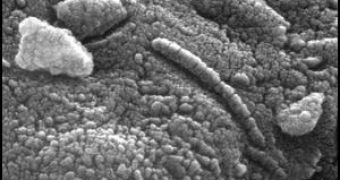Our efforts to study the solar system, in hope that we would find evidence of life on other planets except our own, might be all in vain, as most of the spacecrafts that we've sent into space could have been contaminated with various microscopic forms of life originating on Earth, even though NASA took special precaution to prevent this from happening.
Most of the forms of life present on our planet could never survive long time exposure to the conditions of outer space, however, some types of bacteria might mutate to adapt to the harsh environment.
Experiments, which will take place on board the European module Columbus that will be flown by the Atlantis space shuttle, may reveal if these bacteria could in fact survive in the extreme environment of Mars. The Columbus laboratory should have been flown to the International Space Station on December 6th; however, certain glitches in the sensors that control the shutdown of the main engines prevented the liftoff.
The mutations, which might take place in the DNA of the bacteria as a result of the exposure to extreme space conditions, are only a normal reaction of the evolution process adapting to the environment. Similar tests have previously been made in space conditions, revealing that indeed some life forms originating on Earth can survive the long exposure.
This evidence comes to back up the panspermia theory, which suggests that life is present all over the universe and, furthermore, life forms like bacteria or viruses can travel long distances through space on small bodies of matter, such as comets or spacecrafts that evaded complete biological decontamination.
The European module Columbus will study the effects of long time exposure to the space environment, by using a platform called EXPOSE, which will be attached to the exterior of the ISS, where it will remain for more than a year. The Columbus laboratory will most probably be flown into space in January next year, but it could be further more delayed, if the engineers studying the problems with the fuel gauge decide they require extensive repair.

 14 DAY TRIAL //
14 DAY TRIAL //